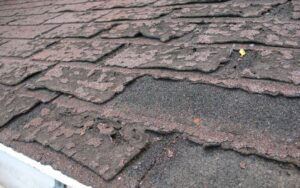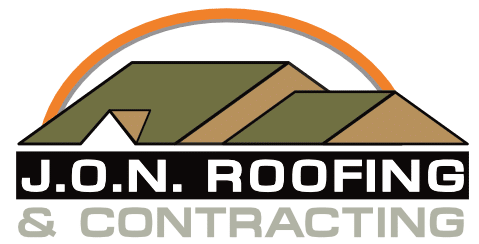Shingle’s
The low cost of laminate shingles is probably its biggest selling point.
JON Roofing works exclusively with BP Canada products
BP Quality Products
We use the best in roofing products – BP Shingles and Nova-Seal®II underlayment. BP shingles are the recommended product by Building Products of Canada as it has outstanding quality and performs far better in the Atlantic region. They have a better wind resistance than the average product.

BP shingles ensure maximum protection and feature our Weather-TiteTM technology with two bands of high-tack adhesive is engineered to withstand hurricane conditions.
Nova-Seal®II is a premium roofing underlayment that delivers an exceptional long-term weather barrier performance compared to traditional asphalt products and other synthetic underlayments.
Our premium
architectural shingles come in a rich palette of designer colours.
The classic 3-tab shingles deliver proven performance, long-term durability, and a wide selection of colours.
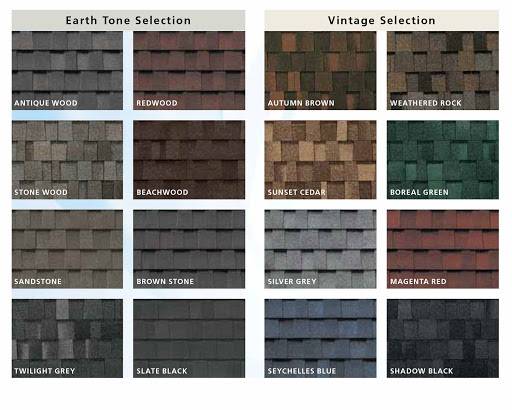
Mystique 42 shingles, uniquely designed with oversized tabs, features dramatic 3-dimensional shadow bands to create a sharp, slate look, both eye-catching and strikingly elegant.
Protect your investment and improve your home’s resale value with this affordable, double-layer laminate shingle.
The life expectancy of your shingles
Understanding how the different components of a roofing system work and how fibreglass laminate shingles are designed is important in protecting your home. Shingles must endure everything from the sun’s scorching heat and its ultraviolet radiation to the effects of seasonal and environmental changes. They may even be subjected to the effects of thermal shock caused by quickly changing weather conditions. The scorching heat of the sun can raise the temperature of the roof’s surface to extremes. This can affect the life expectancy of shingles. Proper ventilation helps to reduce the fluctuation in the temperature of your roof over the course of the day and can reduce your roof’s overall ambient temperature. Besides the heat, the sun is also a source of ultraviolet radiation, making the asphalt layer of the shingles age more rapidly. To protect against this, shingles are covered by coloured granules to protect the asphalt from the sun.
BP shingles have zinc oxide built right into their products.
This provides many years of protection against algae built up on your roof.
So, the long and the short of it is, the better the product, the more extended the shingle will last in any climate, and proper ventilation and installation are key components in the life span of your roof.
The advantages of laminate shingles
Economical. The low cost of the BP laminated shingles is probably its most significant selling point.
Easy to work with and handle.
Perhaps no other roofing product is as easy to install. In some cases, a house can be done in one day by professional contractors. Even serious DIYers have been known to tackle roofing projects, though it’s highly recommended that they
Do Not because of warranty issues.
Easy to repair.
As easy as BP laminated shingles are to install, it’s equally easy to repair if it gets damaged.
Good performance record.
BP laminated shingles come with a limited lifetime warranty. Extended warranties are available for up to 50 years, depending on your existing attic ventilation.
Style options.
The most frequently used product is the laminates available in many colours and deep shadow lines.
inspection
Our full inspection on a shingle roof include:
Wind Damage Inspection:
J.O.N. Roofing inspects every roof for damage caused by strong winds. While missing shingle tabs can easily be seen from the ground, it’s sometimes harder to see shingles creased from being blown up by wind or shingles that are no longer sealed properly because of dirt and debris.
Repairability Inspection
Not every roof that leaks need to be totally replaced. We can often repair any damage caused by improper installation or storm damage if it is localized. To determine our ability to repair your roof, we test the shingles to determine their pliability. If shingles are too brittle, it may not be possible to replace one shingle without damaging the surrounding shingles.
Window Inspection:
Sometimes, a homeowner calls with us to inspect what they mistakenly think is a roof leak, but what they actually have is a window leak. If any windows are above the roofline, J.O.N. Roofing inspects the window to ensure proper installation and window flashings.
Step Flashing inspection:
Step Flashing is used at the diagonal roof-to-wall transitions. Improperly installed or rusted step flashing is often the cause of major leaks that are sometimes hard to pinpoint. J.O.N. Roofingq inspects your step flashing, ensuring that it is securely fastened and not rusted from years of exposure to the elements.
Counter Flashing Inspection:
Counter Flashings are commonly used around chimneys, overstep flashings, and anywhere else there might be a roof to wall transition. J.O.N. Roofing inspects all counter flashings to ensure they are properly sealed
Drip Edge Inspection:
J.O.N. Roofing inspects both the eaves and rakes for installation of drip edge. J.O.N. Roofing always suggests the addition of drip edge for a worry-free roof installation.
Chimney Inspection:
Another common area for leaks is chimneys. Though the chimney isn’t necessarily part of the roofing system, it can cause major leaks that are often mistaken for a roof failure. To rule out any possible problems with the chimney, J.O.N. Roofing visually inspects the chimney to ensure it’s sealed properly and protects against water intrusion.
Pipe Boot Inspection:
The number one cause of leaks on most roofs is the deterioration of the pipe boots that seal around plumbing exhaust vents. Most roofs around Atlanta are roofed with a plastic boot that has a neoprene seal. Due to ultraviolet light, the neoprene dry rots and allows water into the home. J.O.N. Roofing inspects the seal on all pipe boots.
Roof Ventilation Inspection:
Most homes with roofs over ten years old are improperly ventilated. A proper roof ventilation system is evenly balanced at the eaves and ridge to ensure airflow beneath the decking. Roof vents help keep the attic cooler during summer and prevent condensation buildup in the winter – when cold air from the outside meets the warmer air in your attic. We inspect your roof to make sure there is enough ventilation for your roof size.
Nail Head Inspection:
An uncommon problem that is found on older roofs is improper nailing. Some installers nail too high or too low, and even worse, don’t use enough nails for the shingles they are installing. A more common problem that homeowners notice from the ground is called “nail pops.” Nails can back out during the decking’s expansion and contraction and cause the shingles above to pop up. The nail heads can cause small holes as they rub against the shingles if they are not removed. J.O.N. Roofing will check for any nail pops and ensure shingles are properly nailed with enough fasteners.
Blistering Inspection:
Asphalt-based shingles can sometimes blister in the hot Georgia summer. Blistering is caused mostly by one of two ways. Moisture can get trapped in the shingle during the manufacturing process. When the sun heats the shingle, the water can blister beneath the granules that cover the shingle. Another cause of shingle blistering is improper ventilation which causes the shingles to get too hot, and start to blister. Blisters themselves are not always a problem; however, the blisters eventually pop, causing the granules that protect the shingle from ultraviolet light to fall off. J.O.N. Roofing inspects the roof for blistering signs that cannot always be seen from the ground.
Decking Inspection:
J.O.N. Roofing visually inspects the decking during roof leaks to pinpoint the leak and check for any rotting that may have occurred. Roof decking cannot be fully inspected till the current roofing is removed.
Hail Inspection:
Most homeowners are leery of filing unnecessary claims with their homeowner’s insurance company when it comes to roof damage due to hail. To better help the homeowner in the decision-making process, J.O.N. Roofing inspects your roof just as an insurance adjuster might. Though adjusters will make their own call on what is and isn’t hail damage, we always do our best to let you know beforehand if the damage is found on your roof.
Valley inspection:
J.O.N. Roofing inspects all valleys (where the roof planes intersect) for proper installation and ice and water shield use. Heavy rains can cause rushing water to penetrate beneath the shingles, and without proper flashing, water will enter the home.
shingle evaluation
Shingle Evaluation
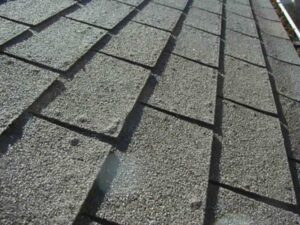
Blistering appears as bubbles on the shingles’ surface or small relatively circular cavities that penetrate the asphalt. Blisters are due to the vaporization and expansion of the volatiles, such as kerosene or water, in the asphalt. The vaporization and expansion occur when the shingles are heated by ambient temperatures, the radiant heat of sunshine, and/or excessive heat from a poorly vented attic. When the blisters of the bubble break or are worn away by normal weathering or foot traffic, a cavity is exposed in the asphalt. Blistering usually does not result in immediate loss of water-shedding ability. Still, it reduces the potential service life of the shingle. When the blisters break, small spots of the asphalt and mat are exposed directly to the deteriorating effects of prolonged contact with sunlight and water.
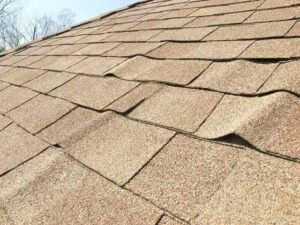
Buckling is the localized heaving of the shingle surface due to the expansion and/or the swelling of the shingle mat combined with the restraint of the shingle mat by the roofing nails, an adjoining shingle, and/or the asphalt sealant. Buckling that extends side to side on a shingle tab immediately restricts the shingle’s water-shedding ability and reduces the potential service life of the shingle because it creates a ridge that may act as a dam that allows water to accumulate and soak into the shingle. Prolonged rainfall onto a shallow slope with buckled shingles may allow penetration of ponding runoff soaks through the shingles. Shingles are not water-tight like a swimming pool membrane. Ponded runoff also exposes the asphalt and mat directly to the deteriorating effects of prolonged contact with water.

Balding is the extensive loss of granules such ch that the underlying asphalt coating is exposed. Balding is the result of normal ageing and weathering of the shingles over the years. Still, it is accelerated by inadequate bonding of the granules to the asphalt coating, repeated scuffing from excessive foot traffic, prolonged wetness, and/or some other manufacturing defect. Balding usually does not result in immediate loss of water-shedding ability. Still, it reduces the shingle’s potential service life because the asphalt is exposed directly to the deteriorating effects of prolonged contact with sunlight and water.

Clawing is downward curling at the corners of the shingles. Clawing commonly occurs when the bottom of the shingle shrinks relative to the top of the shingle. Clawing is increased by the exposure of the bottom side of the shingle to excessive heat from a poorly ventilated attic. Clawing immediately restricts the shingle’s water-shedding ability and reduces the potential service life of the shingle because it creates humps that may act as a dam that allows water to accumulate and soak into the shingle. Prolonged rainfall onto a shallow slope with clawed shingles may allow penetration of ponding runoff soaks through the shingles. Shingles are not water-tight like a swimming pool membrane. Ponded runoff also exposes the asphalt and mat directly to the deteriorating effects of prolonged contact with water.

Cracking of shingles appears as relatively straight line fractures in the shingles. Cracking is due to normal ageing, shrinkage, embrittlement, weathering, and/or deterioration of the shingle over the years. Cracking is specially promoted where the shingle is stretched, and the asphalt is exposed by the bending of the shingles over a ridge, staples, or other discontinuity in the surface of the roof deck
